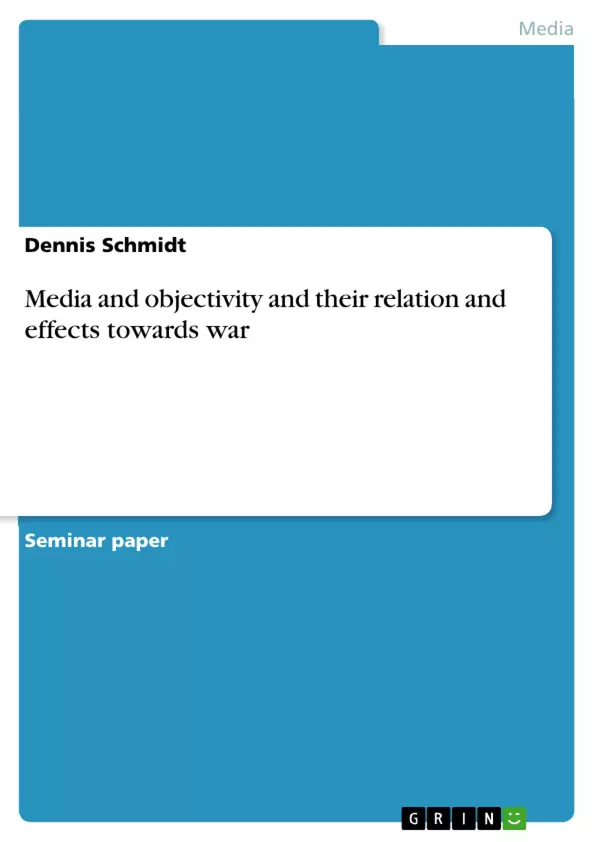“It’s the value of fairness which is extremely important. It’s the ethic of restraining your own biases which is also important… It’s the idea that journalism can’t be the voice of any particular party or sect.”
This is only one of numerous definitions of the term 'objectivity' which will be the main theme of this thesis paper. The following text will deal with the concept of 'objectivity' and its relation and effects towards journalism and media. It will especially concentrate on 'objectivity' in regards to war and conflict by analyzing the link of 'objectivity' and 'subjectivity' to two photographs taken during the Russo-Georgian conflict of 2008. First the thesis will present 'objectivity' as a concept in general and why it plays an important role and is often discussed in the field of journalism. Subsequently the two photographs will be introduced shortly and examined focusing on how far 'objectivity' can be transferred or not to those two contrasting photographs. The conclusion will sum up the results of this analysis.
Inhaltsverzeichnis (Table of Contents)
- Objectivity in journalism and war.
- Introduction
- 'Objectivity' in journalism and media
- Analysis of two photographs in regards to 'Objectivity'
- Conclusion
- The shifts of media's relation to war.
- Introduction
- The shifts of media's relation to war and its effects illustrated by two examples
- Conclusion
Zielsetzung und Themenschwerpunkte (Objectives and Key Themes)
This thesis paper examines the concept of 'objectivity' in journalism and media, particularly in relation to war and conflict. It analyzes two photographs from the 2008 Russo-Georgian conflict to explore the link between 'objectivity' and 'subjectivity' in visual representations of war. The paper also discusses the evolution of media's relationship with war and its effects.
- The concept of 'objectivity' in journalism and its challenges
- The influence of economic goals and new trends in journalism on 'objectivity'
- The role of 'objectivity' in reporting on war and conflict
- The impact of 'subjectivity' and cultural background on photographic representations of war
- The evolution of media's relationship with war and its effects
Zusammenfassung der Kapitel (Chapter Summaries)
The first chapter introduces the concept of 'objectivity' in journalism, highlighting its importance and the ongoing debate surrounding its application. It explores different definitions of 'objectivity' and discusses how it is often challenged by economic pressures, new trends in journalism, and the inherent subjectivity of journalists.
The second chapter delves into the analysis of two photographs taken during the Russo-Georgian War. The first photograph, published in an American newspaper, portrays Russian soldiers relaxing on a tank. The commentary accompanying the photo suggests a negative connotation towards the Russian army, highlighting the potential for bias in news reporting. The second photograph, by Romanian photographer Cristian Movila, depicts a young boy holding a rifle in a refugee camp. This image is presented without commentary, demonstrating a more neutral approach to reporting.
Schlüsselwörter (Keywords)
This thesis focuses on the concepts of 'objectivity' and 'subjectivity' in journalism and media, particularly in relation to war and conflict. Key themes include the challenges to 'objectivity' in contemporary journalism, the influence of economic goals and new trends on reporting, the impact of cultural background on photographic representations, and the evolution of media's relationship with war.
- Quote paper
- Dennis Schmidt (Author), 2013, Media and objectivity and their relation and effects towards war, Munich, GRIN Verlag, https://www.grin.com/document/295910



